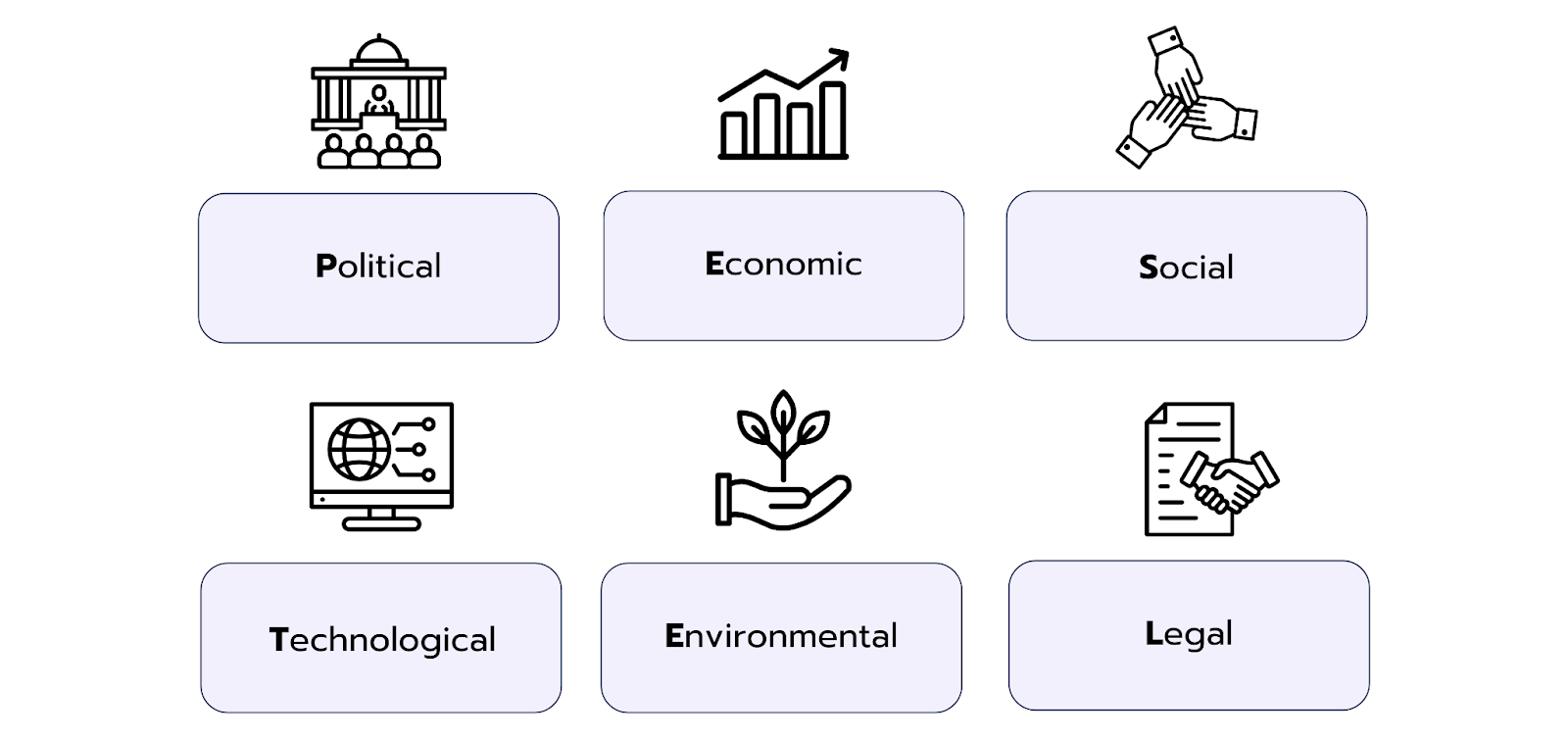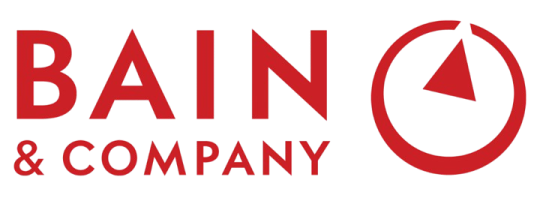Whether it’s new markets, changing regulations, or technological developments, companies must continuously understand and assess their environment to identify risks and opportunities early on. This is exactly where business analysts and consultants come in: they help organizations spot market risks and opportunities at an early stage. To do this, they rely on analytical tools that systematically evaluate both internal factors and external influences. Among the most popular methods, alongside the SWOT analysis and Porter’s Five Forces, is the PESTEL analysis.
While SWOT examines both internal and external factors, PESTEL zooms in on the external components. Thus, it offers more insights into the macro-environmental forces that create those opportunities and threats to help in strategic planning and informed decision-making.
What Is a PESTEL Analysis?
PESTEL is a strategic management tool used to analyze the external environment of an organization. The acronym stands for the following factors:
- Political
- Economic
- Social
- Technological
- Environmental
- Legal

It was originally developed as PEST analysis (Political, Economic, Social, and Technological). However, it evolved over time to include Environmental and Legal considerations as their importance and impact became more evident. Some variations include PESTELE, which adds Ethical influences or STEEPLED, adding Educational and Demographic factors.
Understanding these factors helps organizations to proactively manage risks, refine strategies, improve resilience, and leverage external opportunities to their advantage. For example, a business may spot a favorable technological trend or prepare for potential changes in government regulations.
Below is an overview of each of these factors:
Political Factors
Political factors refer to the influence of government policies, political stability, and international relations on an organization. They can dictate regulations, tax policies, trade restrictions, labor laws, and government stability.
For example, a change in government and its associated policies regarding international trade could impact a company that relies on imports or exports. Similarly, international political tensions might disrupt global supply chains or access to certain markets.
Economic Factors
These are macro-economic trends or elements that affect purchasing power, business costs, and market behavior. They include economic growth rates, interest rates, inflation, unemployment levels, disposable income, and exchange rates. For instance, during economic downturns, consumers may reduce discretionary spending, affecting industries like luxury goods or travel.
Social Factors
Some cultural, demographic, and societal trends influence consumer behavior and societal expectations. These include population growth rates, lifestyle changes, education levels, age distribution, and shifts in consumer preferences.
Example: The aging population in many developed countries creates opportunities in healthcare and retirement services, while growing environmental awareness drives demand for sustainable and eco-friendly products.
Technological Factors
Technological factors look at innovations, automation, R&D activity, and digital transformation that can disrupt industries or create competitive advantages. Examples include emerging technologies, internet penetration, communication infrastructure, and technological obsolescence rates.
Some of the recent disruptions include advances in artificial intelligence which is transforming customer service operations, while blockchain technology is revolutionizing supply chain transparency. The pace of technological change varies across sectors, creating both opportunities for early adopters and threats for companies slow to adapt.
Environmental Factors
Environmental factors address ecological and sustainability concerns that influence business operations and consumer preferences. They can be in the form of climate change impacts, environmental regulations, resource scarcity, and waste management requirements. For example, extreme weather events may disrupt supply chains, while carbon emission regulations might increase compliance costs for manufacturing businesses.
Legal Factors
This is all the laws and regulations that impact how businesses operate. While often intertwined with political factors, legal factors specifically focus on the legal framework itself, including consumer protection laws, intellectual property laws, health and safety regulations, and antitrust laws. For example, new data privacy regulations (like GDPR) have significantly altered how businesses handle customer information. Understanding legal requirements is crucial for ensuring compliance, avoiding costly penalties, and mitigating legal risks.
How to Use the PESTEL Analysis in Your Finance Interview
In interviews for strategy or business analysis roles, it’s common for interviewers to assess your ability to think in a structured way. PESTEL may not be mentioned explicitly, but you're expected to recognize and apply the appropriate framework on your own.
That’s why it’s important to understand when PESTEL is the right tool and how to evaluate each of its six components effectively. A typical question you can tackle using PESTEL is:
"How would you analyze the external environment before entering a new market?"
A strong approach to answering this question is to take a structured look at the external business environment using the PESTEL framework. Consider which of the following dimensions are particularly relevant in the given context and use them to systematically assess the market:
- Political stability, trade agreements, and regulatory frameworks
- Economic indicators such as growth rates, inflation, and consumer purchasing power
- Social trends, demographic shifts, and cultural preferences
- Technological innovations in production, distribution, and communication
- Environmental factors like regulations, sustainability goals, and resource availability
- Legal considerations including labor law, data protection, and intellectual property rights
This structured analysis allows you to identify potential opportunities and risks, tailor strategies to local conditions, and choose the most suitable market entry approach. Reviewing all six PESTEL dimensions, depending on the market, helps you make informed and strategic decisions.
👉 Our case library includes common questions on market entry and analysis. Use them to practice structured thinking and apply the PESTEL framework.








